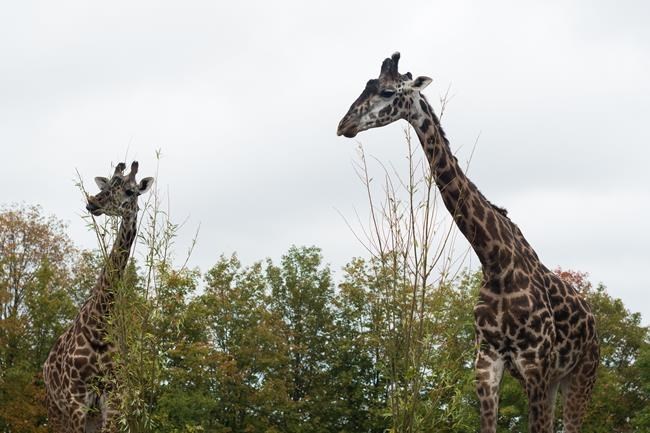TORONTO — This week, for the first time in its history, the Toronto Zoo's animals were under serious threat from smoky skies.
Most were allowed to stay outside, where they're more comfortable, said Grant Furniss, director of wildlife care, but those at particular risk were ushered indoors when the wildfire smoke came rolling in.
Like people, animals that are very old, very young, pregnant or have a history of respiratory issues are most likely to experience ill effects from air pollution.
"As for the healthier animals, it's very difficult to see any sort of clinical or physical signs that they're in any kind of distress. But obviously, we would look at their breathing," Furniss said. "And as soon as we see any signs of distress, those animals would be moved inside immediately."
Zookeepers look for respiratory symptoms among the outdoor cohort, he said. Animals whose abdomens are moving too quickly, indicating trouble breathing, get sent inside.
This is new territory for the Toronto Zoo, Furniss said. "This is the first time it has ever been as bad as it is now."
Furniss said zookeepers are used to moving their charges indoors for the winter, but that's done gradually so the animals get used to their new environments.
"This is an emergency," he said. "We've got to keep them inside, but it might take us a couple of days to calm them down."
To do that, zookeepers engage in what they call "enrichment and training" with the animals.
"Just having things in the habitat that they can actually use and explore: perfumes, different types of ropes, even kids' toys," Furniss said. "A lot of animals love interacting with kids' toys. Those are all little tricks you can use to keep the animals nice and calm and safe."
Meanwhile, the City of Toronto said it didn't move any of its animals at the High Park Animal Display indoors. Instead, staff monitored the animals' health and limited their activity.
A spokeswoman for the Assiniboine Park Zoo in Winnipeg said they're not dealing with the same poor air quality as Toronto this year, but they have similar protocols in place.
"In past years, when smoke has been present, we have given animals access to indoor quarters or even transferred more sensitive animals inside where air filtration could help with the particulates," Laura Cabak said. "We will also monitor individuals closely and avoid elective activities where animals might exert themselves."
The Calgary Zoo declined to comment, but Furniss said he used to work there, and their policy was the same.
He said members of the Association of Zoos and Aquariums have digitized records of animal history that allow them to take each individual animal's medical history into consideration.
"We have a full-time position just doing the record-keeping," he said.
He said there aren't any species that tend to be at particular risk from the fires, aside from birds.
"They have a very different respiratory system to most of us, so any kind of gases or smoke, it affects birds at a much higher percentage," he said.
However, he noted, many of the Toronto Zoo's birds were already indoors because of a highly contagious avian flu, so zookeepers didn't have to move them en masse this week.
This report by The Canadian Press was first published June 9, 2023.
Nicole Thompson, The Canadian Press




